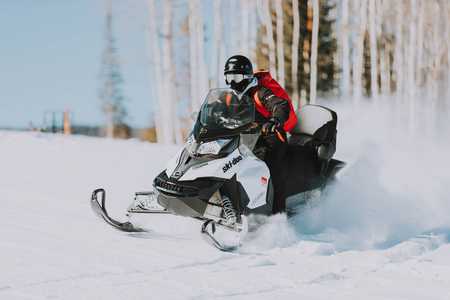Snowmobile overheating issues.
- Home
- Blog
- Snowmobiles
- Snowmobile overheating issues
Snowmobiles Tuesday, December 20, 2022
Some steps you can take to try and resolve a snowmobile overheating issue:

- Check the coolant level: The coolant level in the radiator should be at the proper level according to the manufacturer's recommendations. If it's low, refill it with a mixture of water and coolant. To check the coolant level, first, locate the radiator cap. It is usually located on the top of the radiator or on the expansion tank. Once you've located it, remove the cap carefully, as the coolant may be hot. Then, use a dipstick or a clean cloth to check the coolant level. If it's low, add more until it reaches the proper level.
- Check for blockages: Inspect the radiator for any blockages, such as debris or ice. These can restrict the flow of coolant and cause the engine to overheat. If you find any blockages, remove them carefully.
- Check the thermostat: The thermostat controls the flow of coolant through the engine. If it's stuck closed, it can cause the engine to overheat. To check the thermostat, you will need to locate it and remove it from the engine. It is usually located on the side of the engine block or the intake manifold. Once you've located it, use a thermometer to measure the temperature of the coolant on both sides of the thermostat. If the temperature is significantly different on either side, the thermostat may be stuck and need to be replaced.
- Check the hoses: Inspect the hoses that carry coolant to and from the radiator for any cracks or leaks. If you find any, replace the hoses. To check the hoses, look for any visible damage such as cracks or bulges. You can also feel for any soft spots or leaks by pressing gently on the hose with your finger. If the hose feels hard or has any visible damage, it should be replaced.
- Check the water pump: The water pump circulates coolant through the engine. If it's not working properly, it can cause the engine to overheat. To check the water pump, first, locate it. It is usually located on the front of the engine, near the bottom. Once you've located it, look for any visible damage such as cracks or leaks. You can also try turning the water pump by hand to see if it is functioning properly. If the water pump is damaged or not functioning properly, it will need to be replaced.
- Check the fan: Make sure the fan is functioning properly and cooling the radiator. To check the fan, start the engine and let it run for a few minutes. Then, feel the radiator to see if it is warm. If it is not warm, the fan may not be functioning properly. You can also check the fan by visual inspection. Look for any visible damage such as cracks or bent blades. If the fan is damaged or not functioning properly, it will need to be replaced.
- Check the air filter: A dirty air filter can restrict the flow of air to the engine, causing it to run hotter. To check the air filter, locate it. It is usually located on the side of the engine or in the airbox. Once you've located it, remove it and inspect it for any visible dirt or debris. If the air filter is dirty, clean it or replace it with a new one.
If you're still having problems after trying these steps, it may be best to consult a mechanic or the manufacturer for further assistance.



